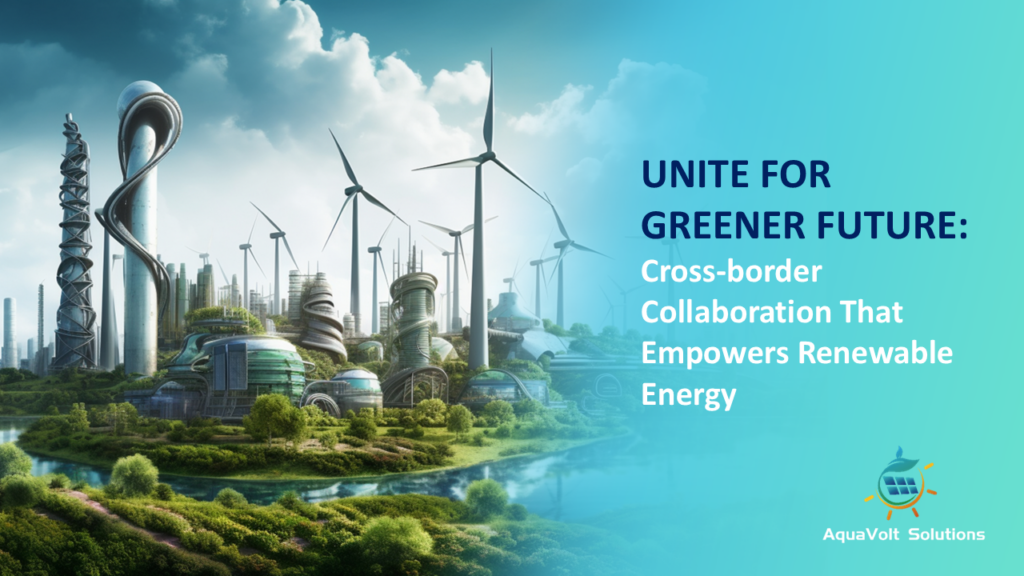
As the world faces an urgent need to transition to renewable energy, countries and companies are looking beyond their borders for sustainable solutions. International collaborations have become essential in harnessing the full potential of green energy, whether it’s through shared resources, joint ventures, or cross-border electricity trade. These partnerships are helping nations meet growing energy demands while achieving ambitious climate goals. Here are some of the most innovative and impactful examples of renewable energy collaboration, highlighting their role in shaping a more sustainable future.
1. China and Africa: A Growing Renewable Energy Partnership
Africa is home to some of the world’s richest renewable energy resources, and China has emerged as a key partner in helping the continent harness this potential. With China’s expertise in wind and solar technologies, and Africa’s abundant resources, the two regions are working together to boost energy security, foster economic development, and promote low-carbon growth.
Chinese companies have implemented hundreds of renewable energy projects in Africa, addressing energy shortages while helping countries transition to sustainable development. However, experts emphasize that further collaboration in technology localization, green finance, and talent development could unlock even greater benefits for both regions. As Africa’s energy demand is expected to skyrocket by 2040, this partnership offers a model for how international cooperation can drive renewable energy growth.
2. ASEAN’s Multilateral Power Grid: A Vision of Regional Energy Security
The ASEAN Power Grid (APG) project exemplifies how regional cooperation can revolutionize energy systems. Through initiatives like the Lao PDR-Thailand-Malaysia-Singapore Power Integration Project (LTMS-PIP), ASEAN countries are trading renewable energy across borders, using existing infrastructure to distribute hydropower from Laos to neighboring nations.
Singapore, which imports renewable energy through this cross-border project, has recently doubled its capacity to source power from Laos and Malaysia. This collaboration is a significant step toward building a fully integrated ASEAN power grid, which will enhance energy security, reduce fossil fuel dependency, and foster regional decarbonization efforts. As cross-border electricity trading becomes more dynamic, ASEAN’s model could inspire other regions to pursue similar partnerships.
3. Taiwan’s Vision: Importing Renewable Energy from Neighboring Countries
As a major tech manufacturing hub, Taiwan is exploring innovative solutions to meet its energy needs and achieve climate goals. With limited space for large-scale renewable energy projects, Taiwan is considering building green power plants in neighboring countries like the Philippines and Japan, then importing the electricity via submarine cables.
This approach reflects a growing trend where countries collaborate to share renewable resources across borders. Inspired by Singapore’s plans to import solar energy from Australia, Taiwan’s strategy could prove to be a cost-effective and scalable way to boost renewable energy consumption, supporting its manufacturing sector while transitioning away from fossil fuels.
4. Challenges and Opportunities in Cross-Border Renewable Energy Collaboration
While the benefits of cross-border renewable energy collaborations are significant, they are not without challenges. Differing regulatory frameworks, infrastructure limitations, and political uncertainties can complicate partnerships. However, as countries work together to align policies, innovate technologies, and create favorable trade agreements, the potential for successful collaboration grows.
Furthermore, as these collaborations expand, the opportunities for shared economic growth, energy security, and climate resilience become even more compelling. The lessons learned from pioneering projects like those in Africa, ASEAN, and Taiwan can pave the way for future partnerships that will drive the global renewable energy transition.
A Future Powered by Cooperation

The path to a sustainable energy future is a global one, built on the foundation of international collaboration. By working together, countries and companies can share resources, expertise, and technologies to create a cleaner, greener world. As cross-border partnerships in renewable energy continue to grow, they will play a crucial role in ensuring energy security, fostering economic prosperity, and combatting climate change on a global scale.
#AquavoltSolutions #AVS #AVSBLOG #GreenTech #ShapeTheFuture #RenewableEnergy #CleanWorld #CleanEnergy #EnergyDemand #EcoWorld #GreenTomorrow #SmartWorld #CarbonFreeWorld #GreenWorld #GreenEconomy #ReduceGasEmissions #ReduceCarbonFootprint #Revolution #JoinTheMovement #GreenPlanet #GreenInvestment #GreenFinance #EnergyShortages #CrossBorderEnergy #SustainableFuture

